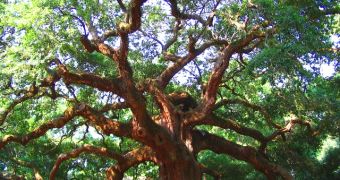Yesterday's issue of the journal Science witnessed the publication of a new report stating that forests worldwide are presently experiencing a troubling increase in the death rates of their big and rather old trees.
The specialists who looked into this issue explain that, interestingly enough, it is not just forests that are losing their trees. Thus, their studies have shown that woodlands, savannas, agricultural lands and even urban areas are starting to “shed” their 100-300 years old trees.
Professor Bill Lawrence, presently working with the James Cook University, wished to stress the fact that, “It is a very, very disturbing trend.”
“We are talking about the loss of the biggest living organisms on the planet, of the largest flowering plants on the planet, of organisms that play a key role in regulating and enriching our world.”
As this leading ecologist explains, large and old trees stand at the core of both natural and man-dominated environments, meaning that they provide animals with food and shelter.
Moreover, they are in the business of storing significant amounts of carbon, which is why no longer having them around will make it ever more difficult to cope with climate change and global warming.
Although further research is needed, it seems that the planet's losing its large trees is partly due to the ongoing changes in terms of global weather conditions, and to insect attacks.
Science Daily quotes the study's lead author, Professor David Lindenmayer, who wished to draw attention to the fact that, “"It's a worldwide problem and appears to be happening in most types of forest.”
“Research is urgently needed to identify the causes of rapid losses of large old trees and strategies for improved management. Without policy changes, large old trees will diminish or disappear in many ecosystems, leading to losses of their associated biota and ecosystem functions,” he and his colleagues went on to add.

 14 DAY TRIAL //
14 DAY TRIAL //